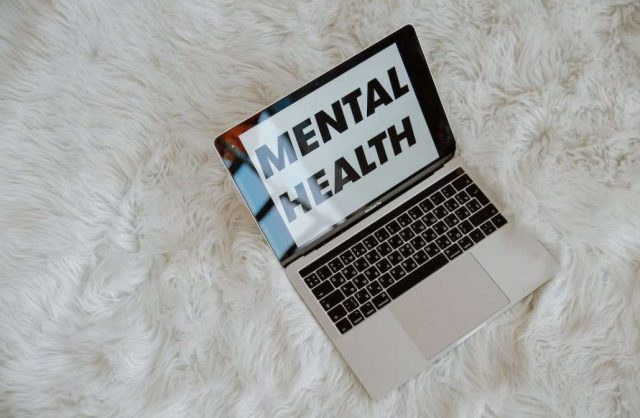Mental health is an essential aspect of overall well-being. Yet, it is often neglected due to societal stigmas and misunderstandings. Mental health awareness is crucial to promoting understanding, empathy, and support for those struggling with their mental health. In today’s fast-paced world, it is vital to recognize the importance of prioritizing our mental health just as much as our physical health. To help spread awareness and promote mental health, this article mentions five ways you can make a difference. So, let’s dive in and explore these methods that can significantly impact mental health awareness.
Why is Mental Health Awareness Important?
Negative stigma has been associated with mental health awareness for a long time. This attitude towards it can lead to discrimination, isolation, and lack of support for struggling people. Raising awareness and challenging these misconceptions is crucial to foster a more compassionate and understanding society.
In addition to stigma, mental health issues are incredibly prevalent, affecting millions worldwide. In fact, according to the World Health Organization, one in four people will experience some form of mental illness in their lifetime. Despite this, mental health is still often overlooked and not given the attention it deserves.
Creating awareness about mental health can lead to several benefits. It can help people identify the signs of mental illness, reducing the likelihood of misdiagnosis or the condition going untreated. It can also help promote community mental health support and empathy, creating a more inclusive and understanding society. By raising awareness, we can progress in breaking down the barriers to mental health support, ultimately leading to better mental health outcomes.
Five Ways to Spread Mental Health Awareness
Here are the five leading ways to promote mental health awareness.
1) Social Media Campaigns
Social media has become integral to our daily lives in today’s digital age. It has tremendous power to influence and spread awareness on various issues, including mental health. Social media campaigns are an effective way to spread mental health awareness to a large audience. It involves creating and sharing content on various social media platforms that highlight the importance of mental health, reduce stigma, and promote resources and support.
One of the benefits of social media campaigns is their ability to reach a large audience quickly and at a low cost. It allows people to share their experiences and stories, providing a platform for discussion and support. Additionally, social media campaigns can be tailored to specific demographics and target audiences, making it an effective way to reach those who may not have access to traditional mental health resources.
One example of a successful social media campaign is the hashtag #BellLetsTalk, launched by the Canadian telecommunications company Bell Canada. This campaign shows the power of social media in spreading awareness and promoting mental health.
2) Workplace Mental Health Programs
Workplace mental health programs are initiatives employers implement to promote mental health and well-being. These programs can include a range of resources, such as counseling services, mental health training, and flexible work arrangements.
One of the benefits of workplace mental health programs is that they can improve employee productivity and reduce absenteeism. Studies have shown that addressing mental health in the workplace can lead to a reduction in sick days and an increase in job satisfaction. Additionally, these programs can reduce the stigma surrounding mental health in the workplace and provide a supportive environment for employees.
3) Mental Health Education in Schools
Mental health education in schools is important to promote awareness and understanding of mental health issues among young people. It involves teaching students about mental health, including common mental health conditions, coping strategies, and how to seek help.
One of the benefits of mental health education in schools is that it can promote early intervention and prevention of mental health issues. It can also help reduce stigma and discrimination toward those struggling with mental health. Furthermore, mental health education can provide students with the tools and resources to support their mental health and that of their peers.
An example of a successful mental health education program is the “Mind of the Student” in the United Kingdom. The campaign aims to improve body confidence and reduce the stigma surrounding mental health in young people. The program provides free educational resources for schools, including lesson plans and assembly materials, to promote mental health awareness and body positivity.
4) Public Service Announcements (PSAs)
Public Service Announcements (PSAs) are short messages designed to educate the public on various issues, including mental health. PSAs can be broadcast on television, radio, and social media and effectively reach a large audience.
One of the benefits of PSAs is that they can increase awareness of mental health issues and promote access to mental health resources. They can also reduce stigma and provide a platform for discussion and support.
One example of a successful PSA campaign is the “Seize the Awkward” campaign launched by the American Foundation for Suicide Prevention (AFSP). The campaign encourages young people to talk about mental health and suicide prevention with their friends. It features short, relatable videos emphasizing the importance of checking in with friends and providing support.
- Mental Health Support Groups
Mental health support groups are groups of people who share their experiences, provide emotional support, and discuss coping strategies for mental health issues. Mental health professionals or peers who have similar experiences lead these groups.
One of the benefits of mental health support groups is that they can provide a safe and supportive environment for individuals struggling with mental health issues. They can also reduce feelings of isolation and promote a sense of community. Furthermore, support groups can provide individuals with the tools and resources to manage their mental health and improve their quality of life.
An example of a successful mental health support group is the “Depression and Bipolar Support Alliance” (DBSA) in the United States. The DBSA is a peer-led support group for individuals with depression and bipolar disorder. It provides a safe and supportive environment for individuals to share their experiences and receive emotional support.
Conclusion
Mental health awareness is a crucial aspect of well-being that deserves our attention and support. Through social media campaigns, workplace mental health programs, mental health education in schools, public service announcements, and mental health support groups, we can promote understanding and improve access to resources for those struggling with mental health issues. These methods allow us to reach a wide audience, provide a platform for discussion and support, and promote a sense of community.

Speaks from heart, always too passionate and driven by emotions. Spins the words with kindness & sharpness, intriguing your ever-inscrutable minds.




